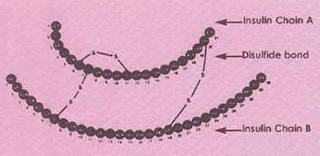Process Description 1: Introduction to Manufacturing of Insulin
Tuesday, January 1, 2008
Process Description: The Commercial Manufacture of Insulin
A Brief Introduction to the Manufacture of Insulin...
Prior to genetic engineering, many diabetics cannot make insulin and therefore need an external source. Since human insulin could not isolated readily, animal insulin such as the pig or cow was used for injection although the insulin from these species is not identical to the human protein.
The similarities in structure and biological activity of the porcine (pig) and bovine (cow) insulins to human insulin has made it possible for the animal proteins to be used in the treatment of diabetes. However, the human immune system treats the animal insulins to human insulin as foreign and generates antibodies which may make it necessary to administer an increased dosage of these animal insulin to the patient to achieve the desired effect.
Currently, insulin is industrially made by genetic engineering. Genetic engineering, also known as recombinant DNA technology, consists of altering the genes in a living organism to produce a Genetically Modified Organism (GMO) with a new genotype.
Production of insulin by recombinant means display several advantages, including
- reliability of supply;
- elimination of the risk of accidental transmission of disease due to the presence of pathogen in animals;
- economically attractive (once the initial capital investment has been made).
Human insulin gene is inserted into a vector such as a bacteria plasmid, and it is transformed into the bacteria host cell. Click on the image below for an enlarge version:

Insulin is a 51 amino acid protein that is made up of two chains, the 21-amino acid A chain and the 30-amino acid B chain, linked by two disulfide bonds.
 There are two methods of producing the insulin by genetic recombination:
There are two methods of producing the insulin by genetic recombination:
Method A: The 'A' and 'B' Insulin Chains (generating the chains individually and chemically combining them there after)
Method B: The Pro-insulin Method (creating a single-chain precursor, huma proinsulin, and cleave out a 35-amino acid peptide that joins the two chains)
>You are Here: Part I of Process Description - Brief Introduction<
>Part II of Process Description - Method A<
>Part III of Process Description - Method B<
>Part IV of Process Description - Types of Insulin<
@ 10:59 AM




 MB0606 Group A consists of the following individuals, who are currently serving time in their nearest local mental institute for therapy after completing this blog:
MB0606 Group A consists of the following individuals, who are currently serving time in their nearest local mental institute for therapy after completing this blog:
 YOUR LINKS HERE.
YOUR LINKS HERE. Oirginal designer : kathleen
Oirginal designer : kathleen